Often overlooked by the neighboring Madrid and Barcelona, Bilbao has quickly become one of Spain’s most promising and upcoming cities. We recently spent 3 days in Bilbao, exploring this gleaming city.
From the Guggenheim Museum to the town of Casco Viejo, Bilbao had its fair share of traditions and cosmopolitan contrasts. With breathtaking aerial views and markets boasting delicious cuisine, Bilbao had much to offer and quickly became one of our favorite destinations.
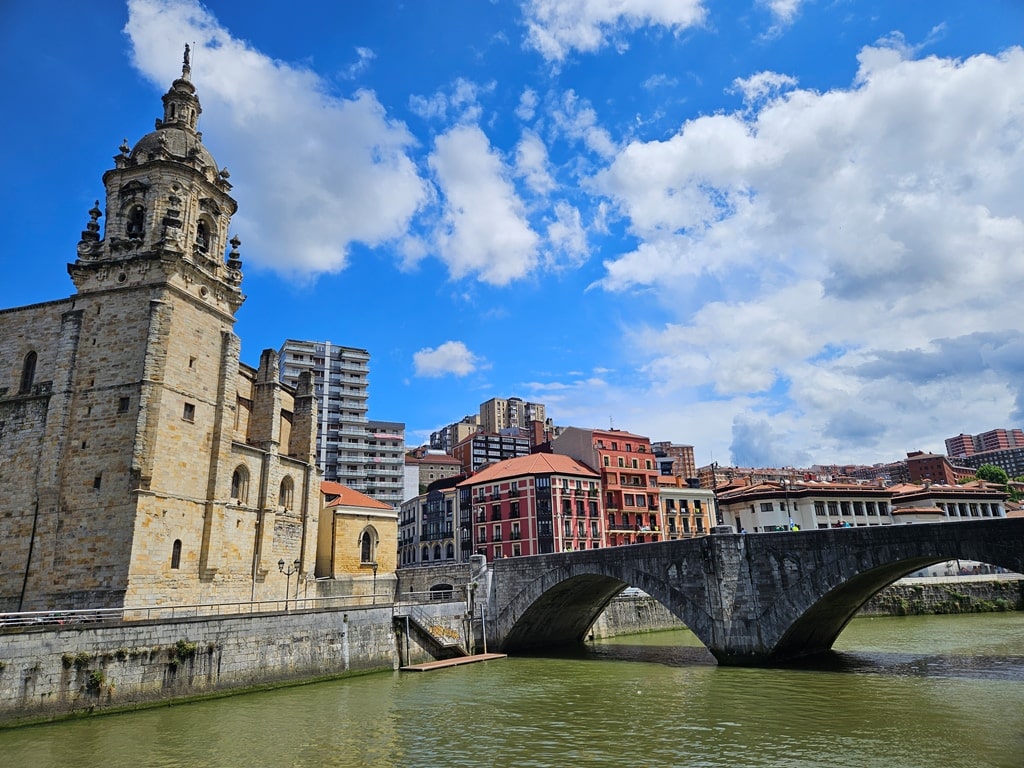
Since we spent 3 days in Bilbao, we put together a detailed itinerary to help you on your next adventure!
Disclaimer: This post contains affiliate links. This means that should you click on certain links, and then subsequently purchase a product, I will receive a small commission.
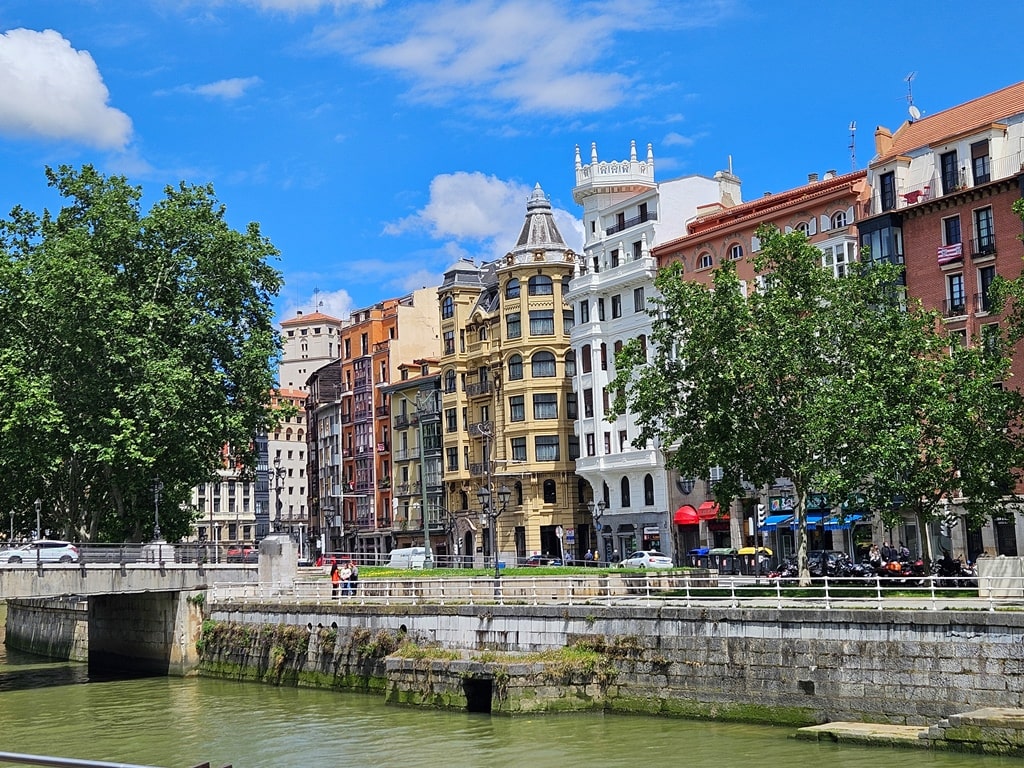
Table of Contents
A Comprehensive 3-Day Bilbao Itinerary
- Day 1: Guggenheim Museum, Sculpture of Puppy, Casco Viejo, Ribera Market
- Day 2: Vizcaya Bridge, Getxo, Museo de Bellas Artes, Mount Artxanda
- Day 3: Make a Day Trip to La Rioja
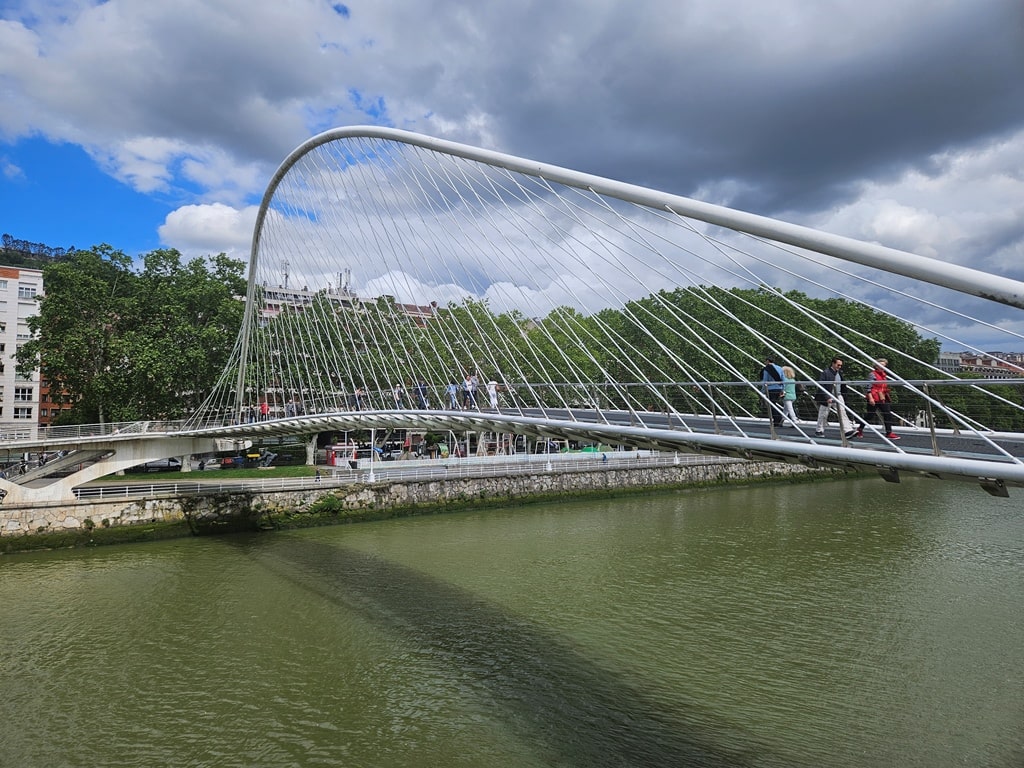
3 Days in Bilbao – Day One
Guggenheim Museum Bilbao
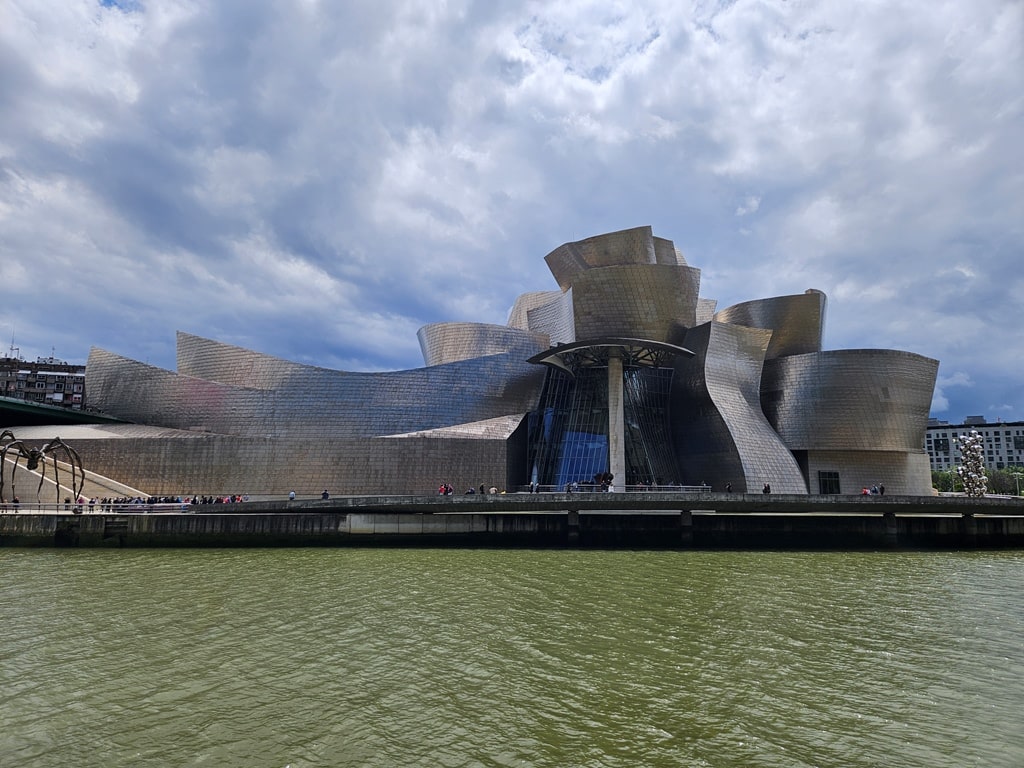
Known as the “Miracle in Bilbao”, The Guggenheim Museum in Bilbao opened in 1997 and has inspired visitors, artists, and critics worldwide. It was designed by Frank Gehry, a Los Angeles architect who has designed many structures within the United States.
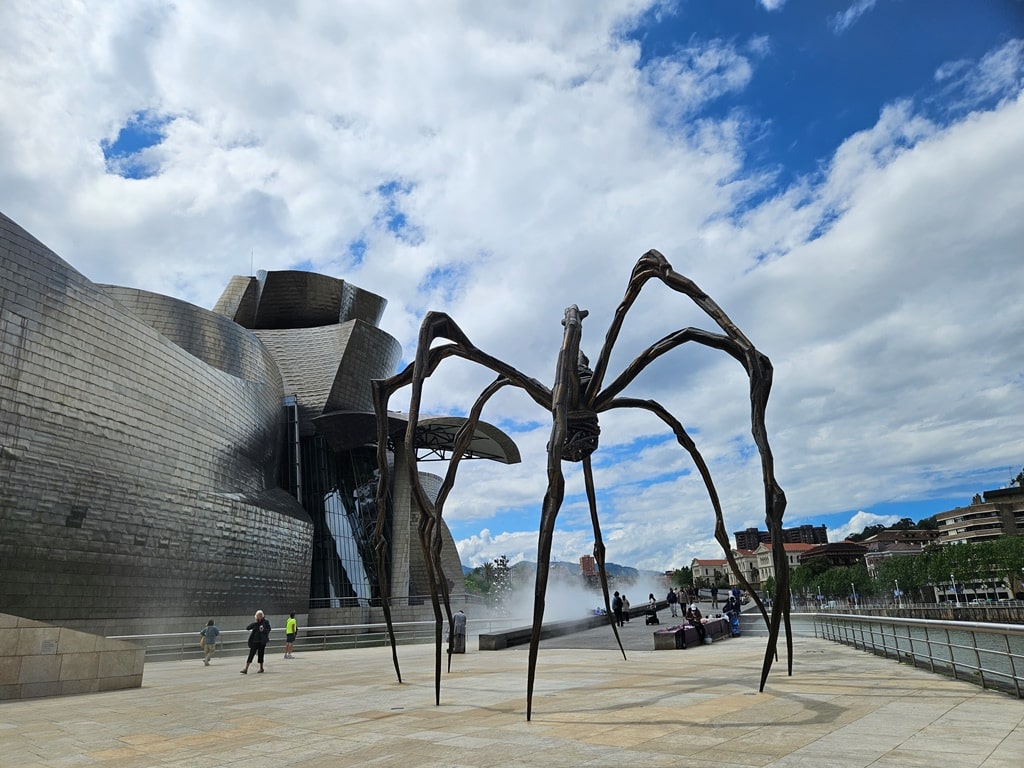
While touring the museum, we learned that its first exhibit for the grand opening had more than 300 pieces from the Guggenheim’s personal collection.
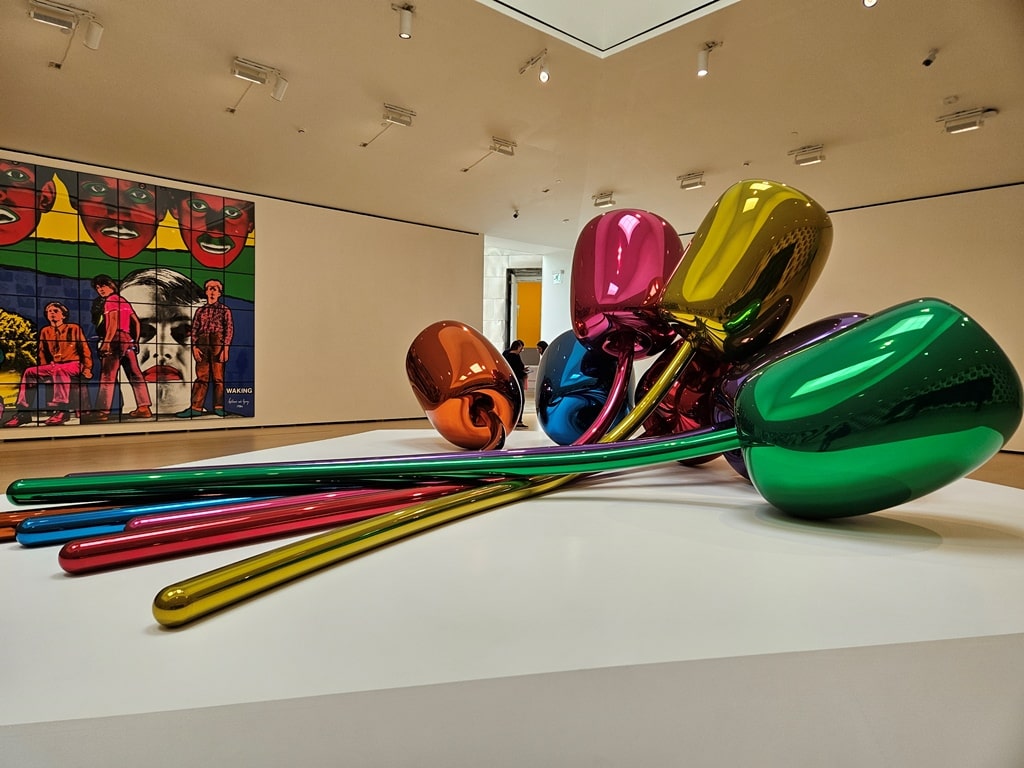
The rooms of each gallery were constructed with several shapes to give us a different perspective when viewing post-modern pieces of art and modern artwork through the present day. Hosted in the Arcelor Gallery, we viewed one of the museum’s most significant pieces called “The Matter of Time”.
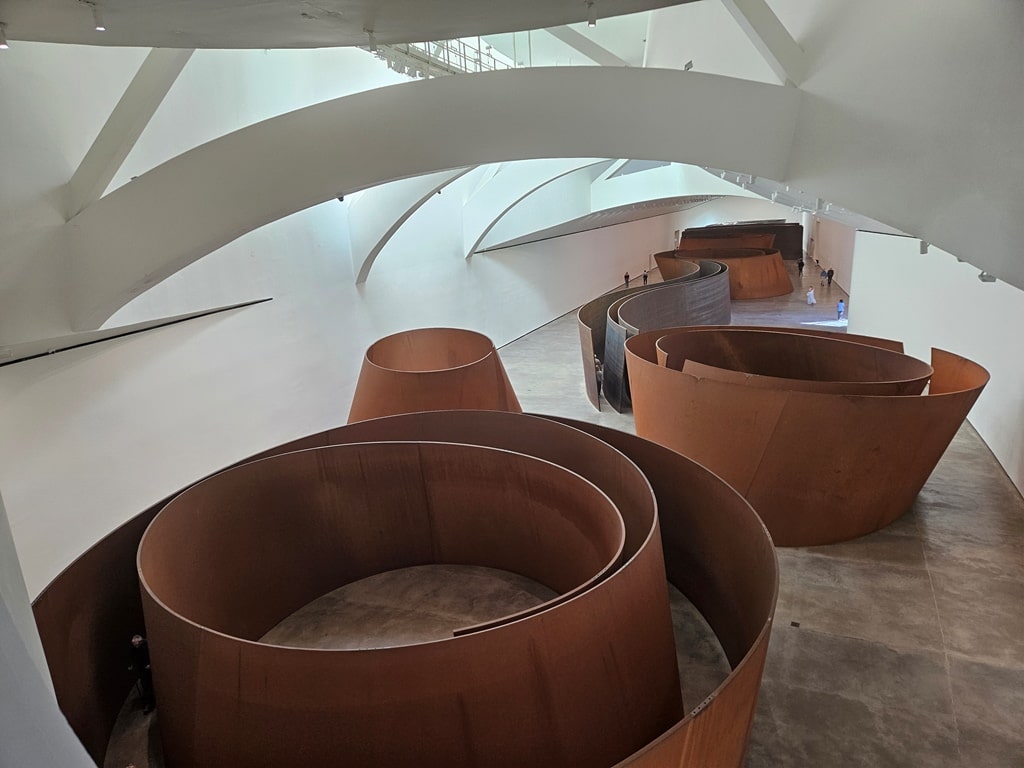
This massive piece is made of steel, stands 14 feet high, and weighs approximately 22 tons. If you enjoy great art pieces, the Guggenheim is an excellent location to view unique collections from famous artists.
View the Monumental Sculpture of Puppy
Outside of the Guggenheim Museum stood the stunning sculpture of Puppy. As we stood there admiring the 40-foot sculpture, we noticed it was a sculpture of a West Highland white terrier with flowered plants at its base that included begonias and petunias. Attached to its base was a stainless steel structure and a series of pipes that helped feed and water the plants every 24 hours.
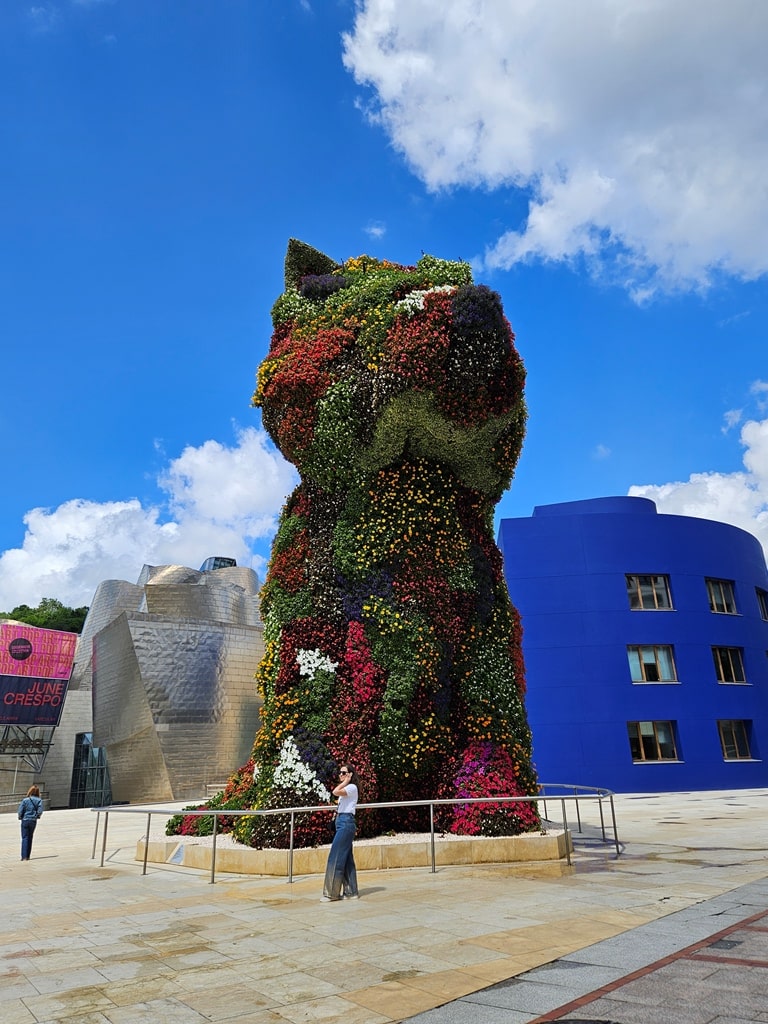
This was one of our favorite sites in the city, and we were surprised that such a tall sculpture could be designed using flowers. The Puppy sculpture was such a clever way to attract tourists to the museum using an artistic approach.
If you want to get a picture with the iconic Puppy sculpture designed by Jeff Koons, it’s best to visit in the morning so you can beat the crowds.
Casco Viejo – The Historic Old Town of Bilbao

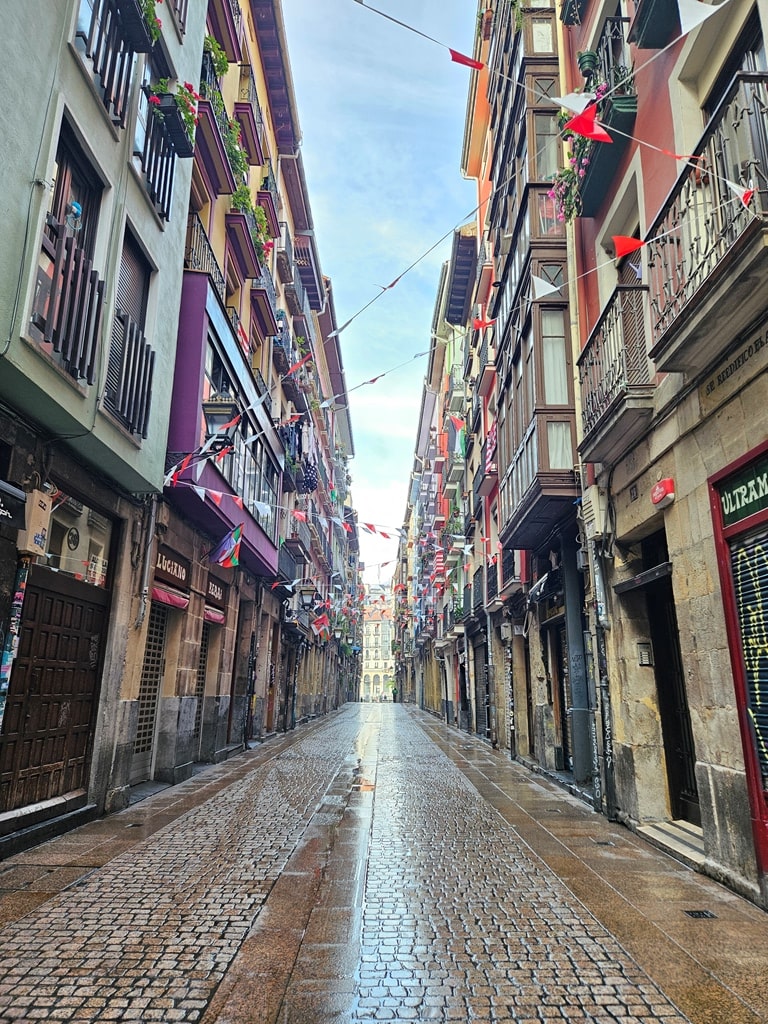
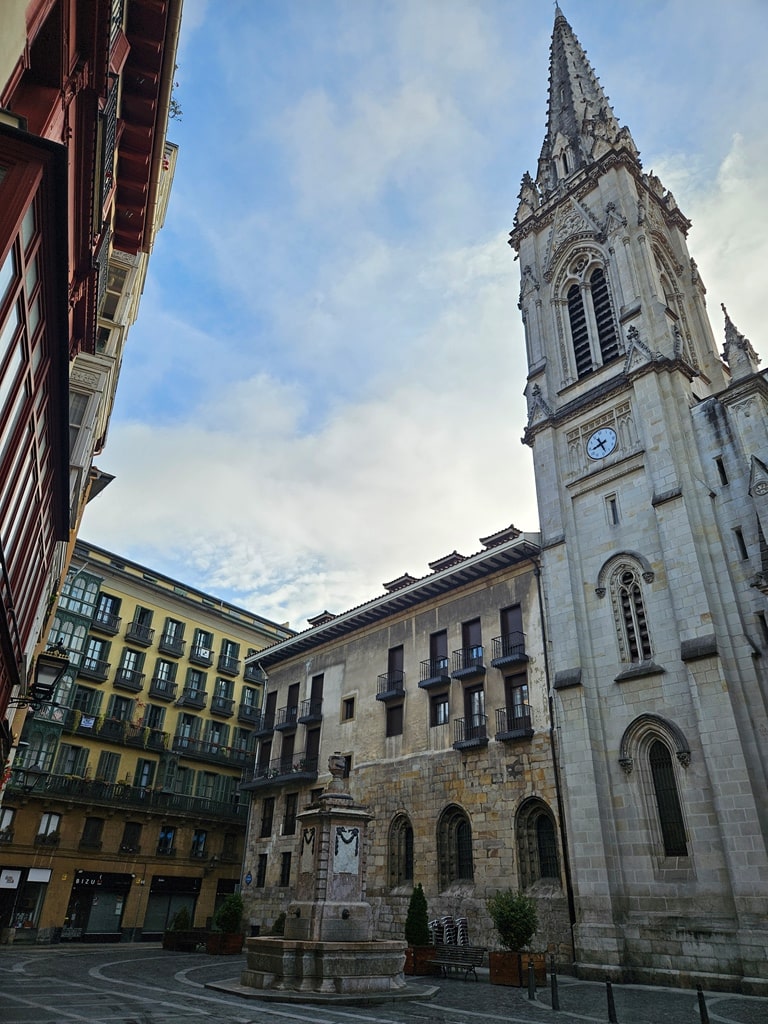
After leaving the Guggenheim Museum, we visited Casco Viejo, one of the historic old towns of Bilbao. While wandering through its narrow streets, we noticed the lively mixture of heritage and charming cafes and bars. In a large pedestrian area, the bars, shops, and cafes sat along the streets between the Bilbao River estuary and the Plaza Nueva Square.
As we walked the streets of this historic town, we came upon the Santiago Cathedral, a Gothic church and one of Bilbao’s oldest buildings. Inside, the church had vaulted ceilings and choir stalls built in Gothic style.
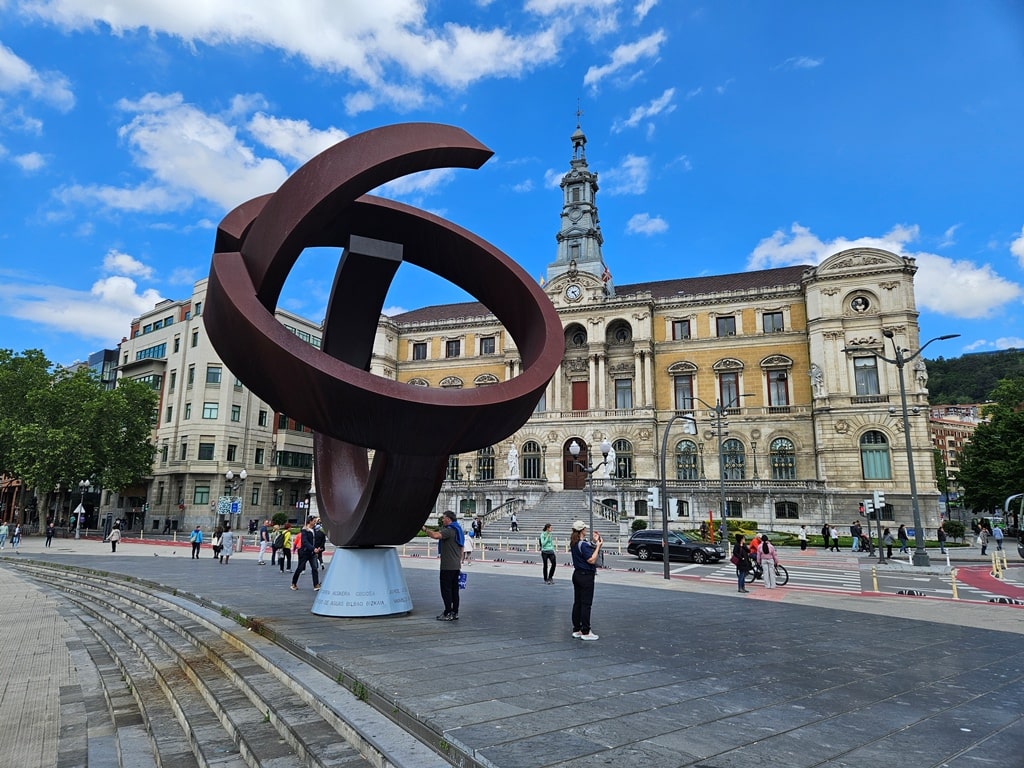
As we walked around the church’s perimeter, we noticed it had three access doors, but the Door of the Angel was what we were attracted to the most and was the most elaborate among the three. The Door of the Angel led to a cloister garden built in the late sixteenth century.
Grab a Bite to Eat at Ribera Market
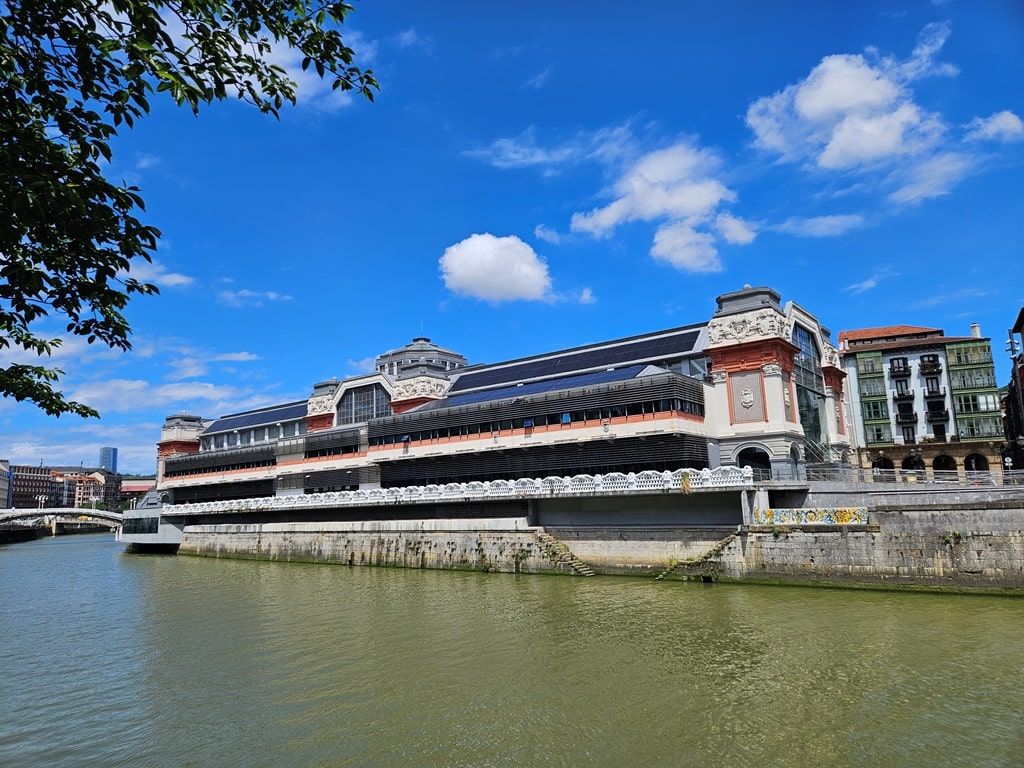
As we did our fair share of walking on the first day, we found a charming spot to eat called the Ribera Market. Known as Europe’s largest produce market, the Ribera Market sits on a beautiful waterfront of the Nervión River.

Traditional stands hold an abundance of fresh vegetables, fruit, fish, and meats. While making conversation with the locals, we found out that the majority of produce comes from the nearby villages. The produce stands sat alongside various bars and restaurants where you could hear the refreshing sounds of jazz music.

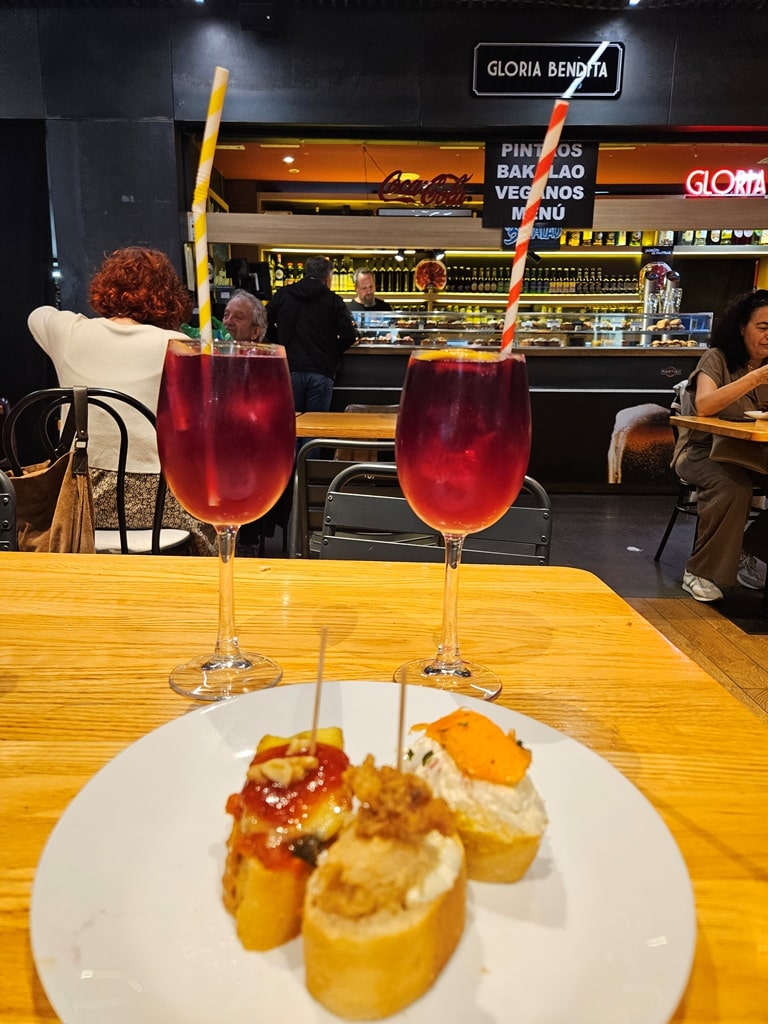
As we made our way through the crowds, we grabbed a seat at the market’s hot spot, Café-bar La Ribera. The café had gorgeous terrace views of the river, a modest stage, a reading space, and a dining and bar area. We grabbed a seat at the bar and had the fresh fish we’d purchased from the market cooked on-site by its employees.
3 Days in Bilbao – Day Two
Visit the Vizcaya Bridge in Getxo
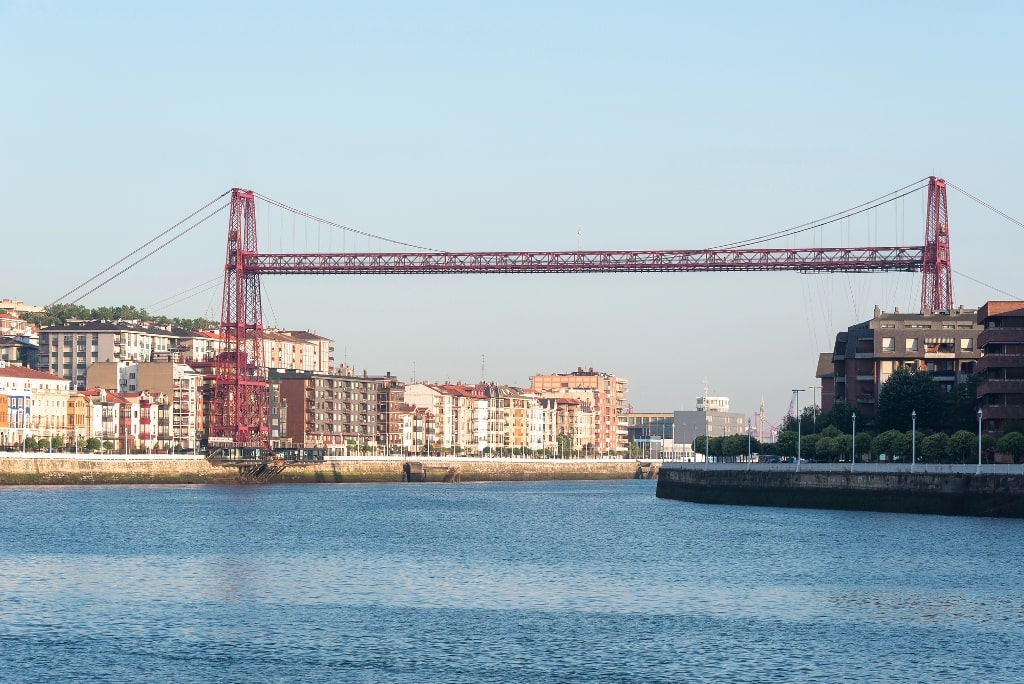
On our second day, we visited the oldest transporter bridge in Getxo, the Vizcaya Bridge. With its old age, I was shocked to see this bridge was still functional, with an estimated 6 million people crossing it yearly. Designed by Alberto de Palacio, the bridge stands 45 meters high and is 160 meters long.
Located in northern Bilbao, this old bridge links the towns of Portugalete and Getxo. With the bridge’s unique design, vehicles are transported using a hanging gondola to ensure that there is little to no disruption to maritime traffic underneath.
Presently, the Vizcaya Bridge runs daily, and many motorcyclists, six cars, and approximately 200 passengers can ride on the bridge at one time. We had our best views by taking a lift up to the elevated walkway, which gave us access to aerial views and where we could see passengers complete their trip across the bridge in 90 seconds.
Explore the Charming Town of Getxo
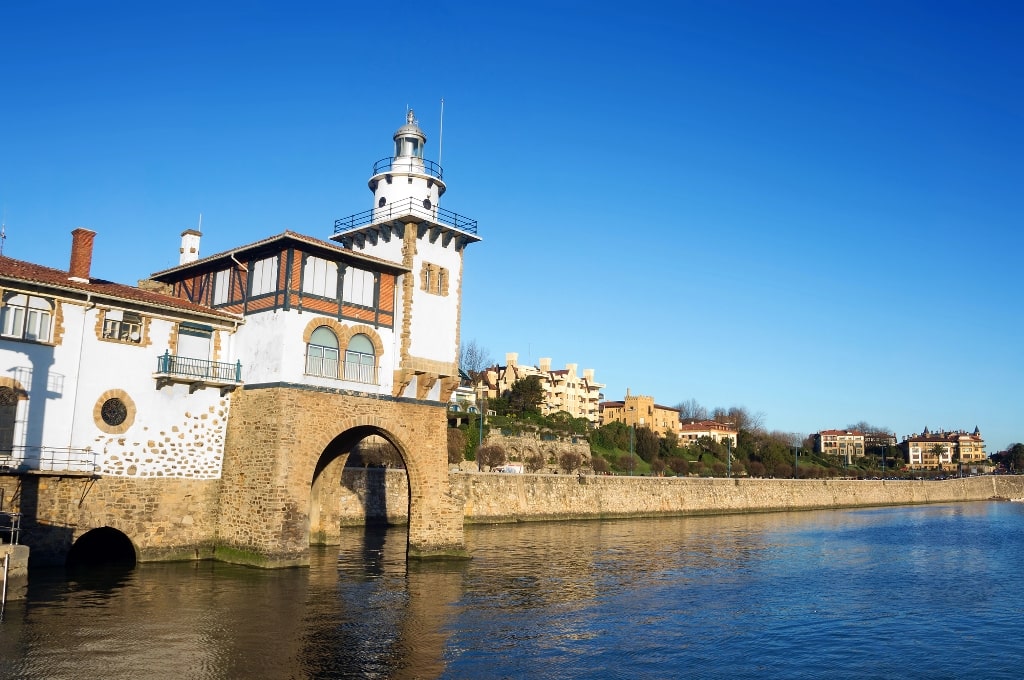
We headed to the charming town of Getxo, only a short 20-minute trip from Bilbao, where we were welcomed with unique beaches, monuments, beautiful waterfront, and fantastic architecture. In this old port, we passed various restaurants that specialized in seafood and fish dishes, in addition to delicious Basque cuisine.
Built between the Neurón River and cliffs, Getxo is filled with diverse neighborhoods, each with its charming and unique character. From the La Galea cliffs to the Hanging Bizkaia Bridge, its natural landscapes are stunning.
Museo de Bellas Artes (Museum of Fine Arts)

The Museo de Bellas Artes is home to a remarkable collection that includes 20th-century pop art and gothic sculptures. The museum holds almost 10,000 artistic pieces, including contemporary and modern art.


The building was spectacular, with a beautiful park where you could wander outdoors. We enjoyed the differences in artwork compared to visiting the Guggenheim earlier in our trip. As we walked around its attractive layout, we passed the Goya exhibit, which was well-displayed with translations that were available in English for those who needed it.
Each gallery was listed by various periods, with the focal point being Spanish artists. Our favorite artist was Jose Arrue Valle, who painted several pieces with village displays. There are several reading areas throughout the museum, with guides in English to help you along the way.
Mount Artxanda

For panoramic views of Bilbao, we took the funicular railway to the top of Mount Artxanda. Known as Bilbao’s most popular spot, Mount Artxanda allows you to explore Bilbao from several angles. By riding on Artxanda’s funicular, we made it to the top in just under 3 minutes.

The railway train departs every 25 minutes and is a short, 10-minute walk from the city hall. Mount Artxanda is located approximately 300 meters above sea level and quickly became our favorite spot to catch the city’s best views.

It also allowed us to see Bilbao from a different perspective, with its traditional buildings and churches, along with several Bilbao urban landscapes. The buildings that stood out were the Guggenheim Museum, the La Salve Bridge, and the San Mamés stadium.
We enjoyed our day on Mount Artxanda and sampled some mouthwatering Basque cuisine at Txakoli Simón on a wooden table under the trees.
3 Days in Bilbao – Day Three
Make a Day Trip to La Rioja
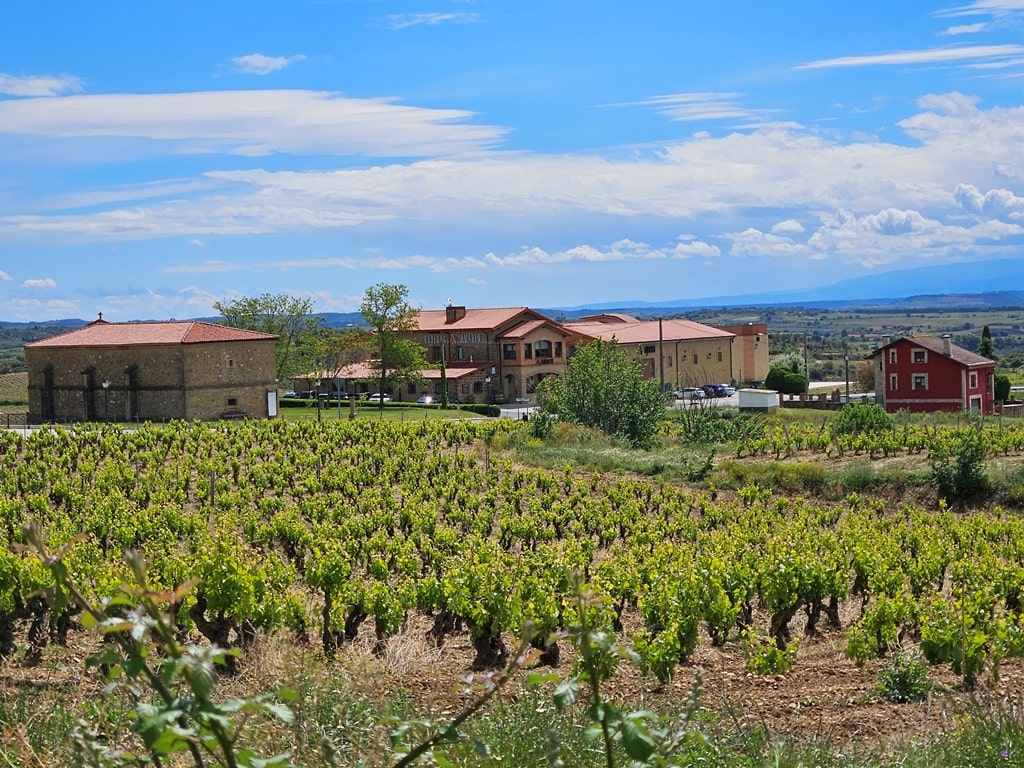
On our last day, we decided to make a day trip to La Rioja, where we took the Rioja Wine Tour by Local Experts Tours. According to the locals we spoke to in town, it was the best way to sample Spanish Rioja wines, and we knew we couldn’t pass up the opportunity before our trip ended.


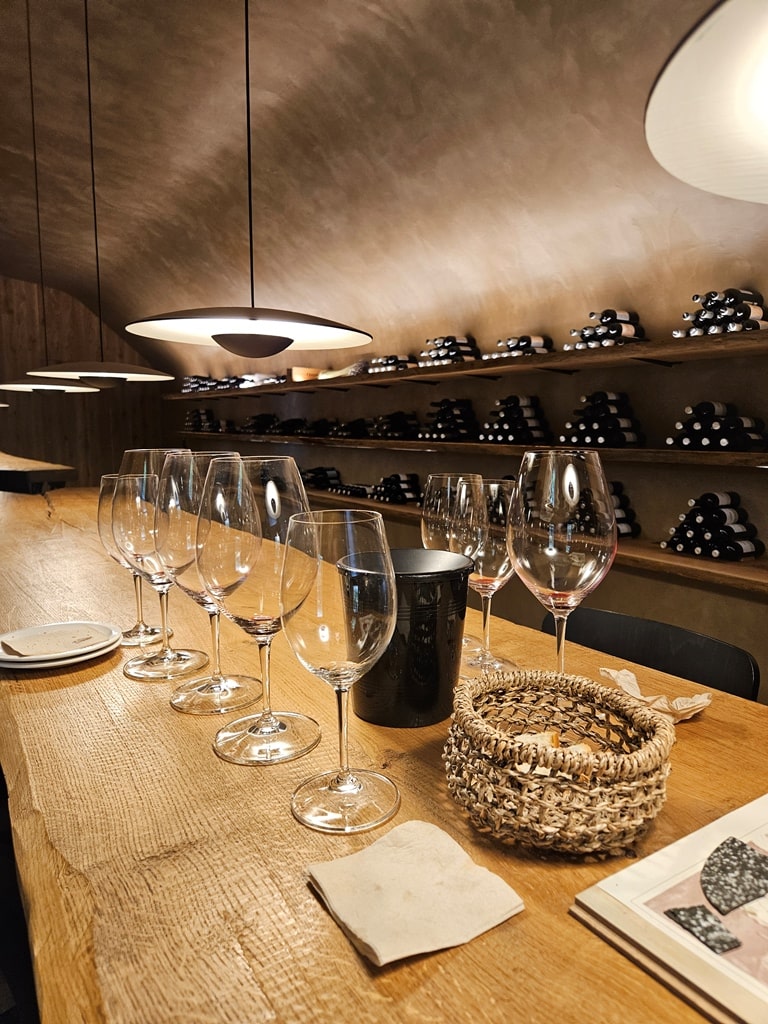
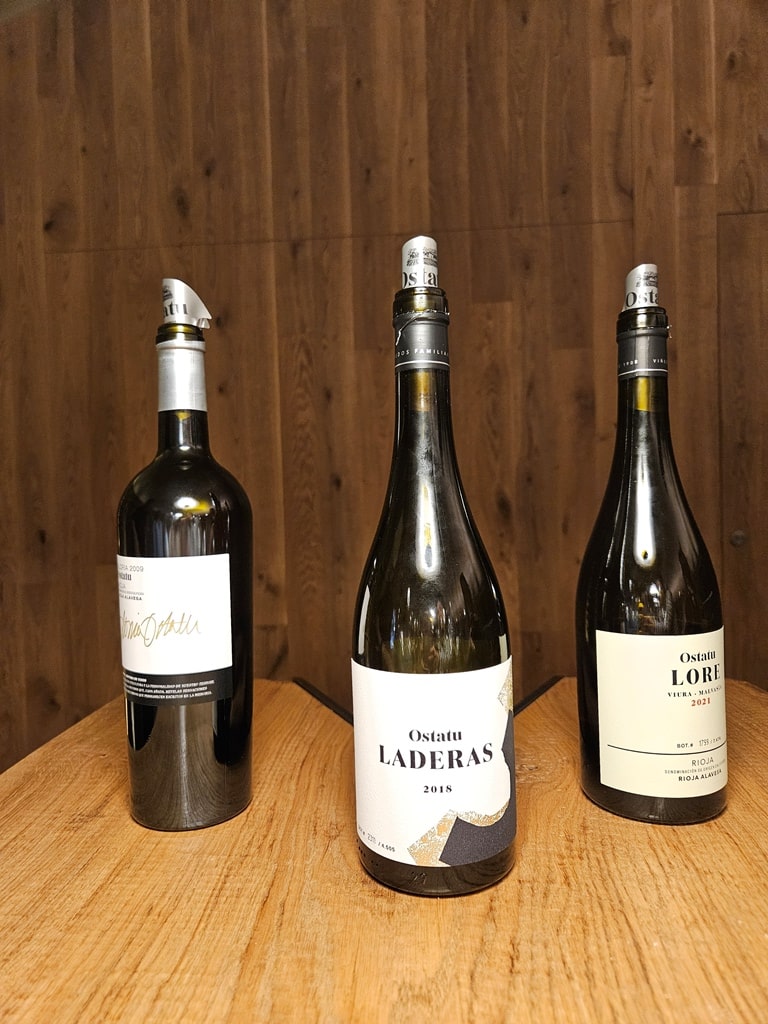
Due to its terrain and climate, the Rioja region has been most suitable for wine production since the Roman era. On our tour, we visited two wineries where we could understand the several ways wine was produced. We also visited the town of LaGuardia, where we took in panoramic views of the area.

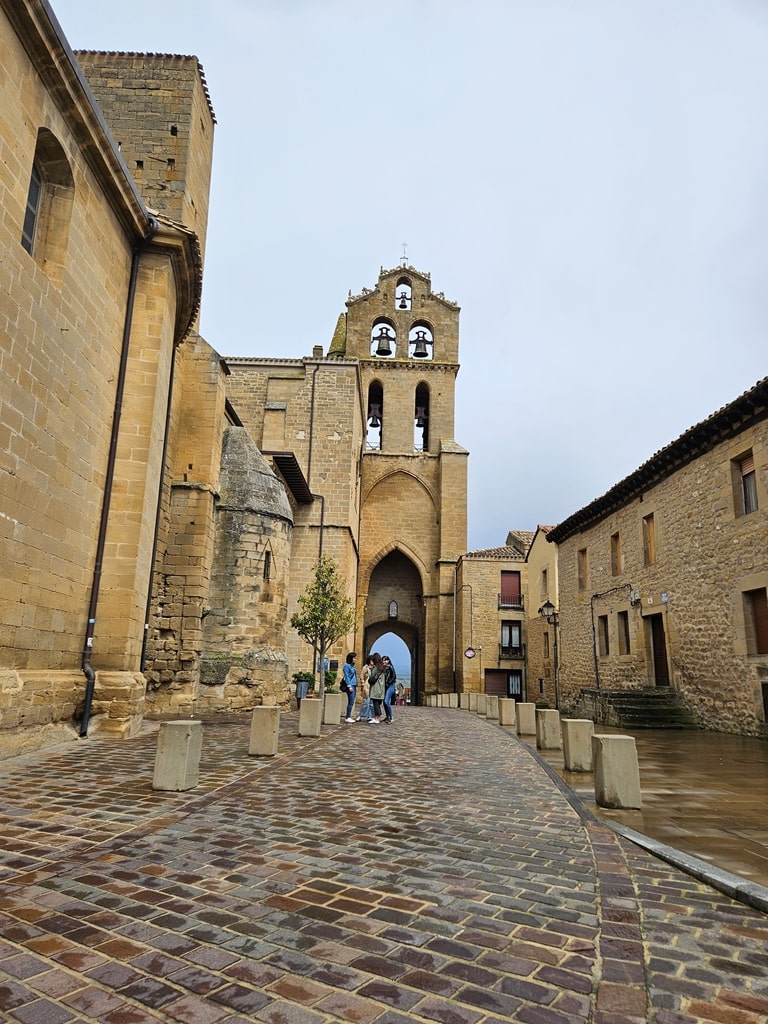
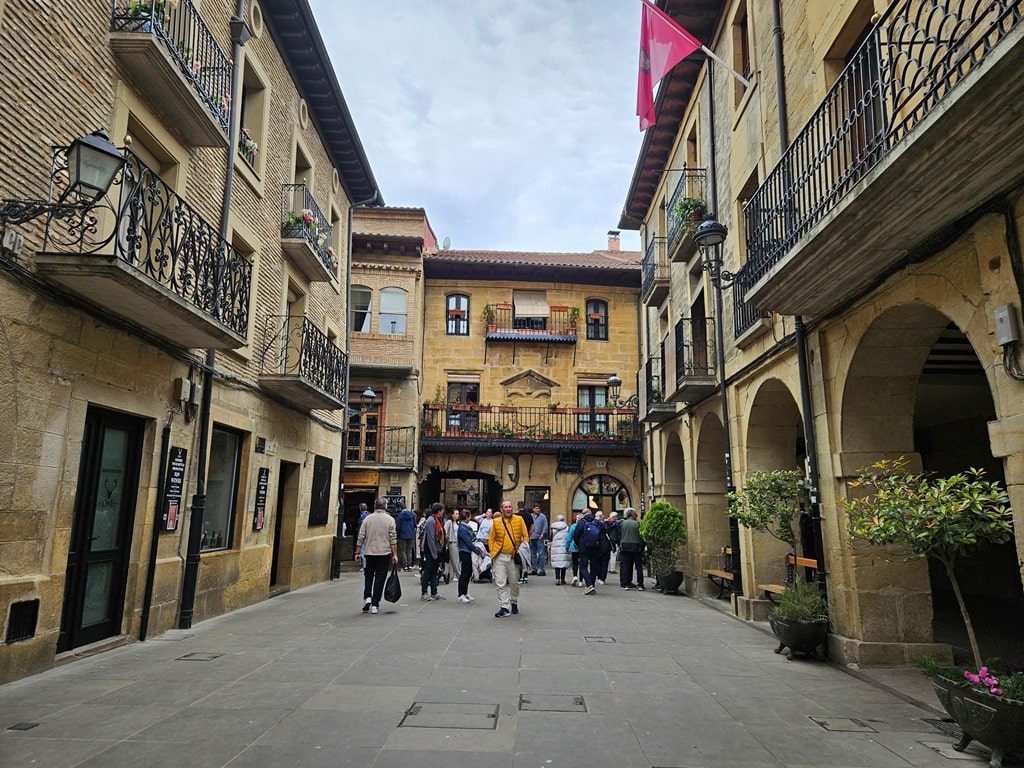
This was one of our favorite tours because we didn’t need to be well-versed in wine, and the tours were small, with less than eight people. The tour was convenient as it provided a hotel pickup and drop-off in a private vehicle.
Where to Stay in Bilbao
While in Bilbao, we booked a room at NYX Hotel Bilbao, a phenomenal hotel with an excellent rating. This breathtaking, 4-star hotel has beautiful views and bar access with a shared lounge provided. Our room had a private shower and bathroom, a flat-screen TV, a fridge, a minibar, and a coffee machine.
The NYX hotel was within walking distance of Bilbao’s top attractions, such as the Vizcaya Bridge, Guggenheim Museum Bilbao, and the Calatrava Bridge. We were only a 10-minute walk from the train station and close to coffee shops, restaurants, and bars.
Click here for more information and to check the latest prices.
